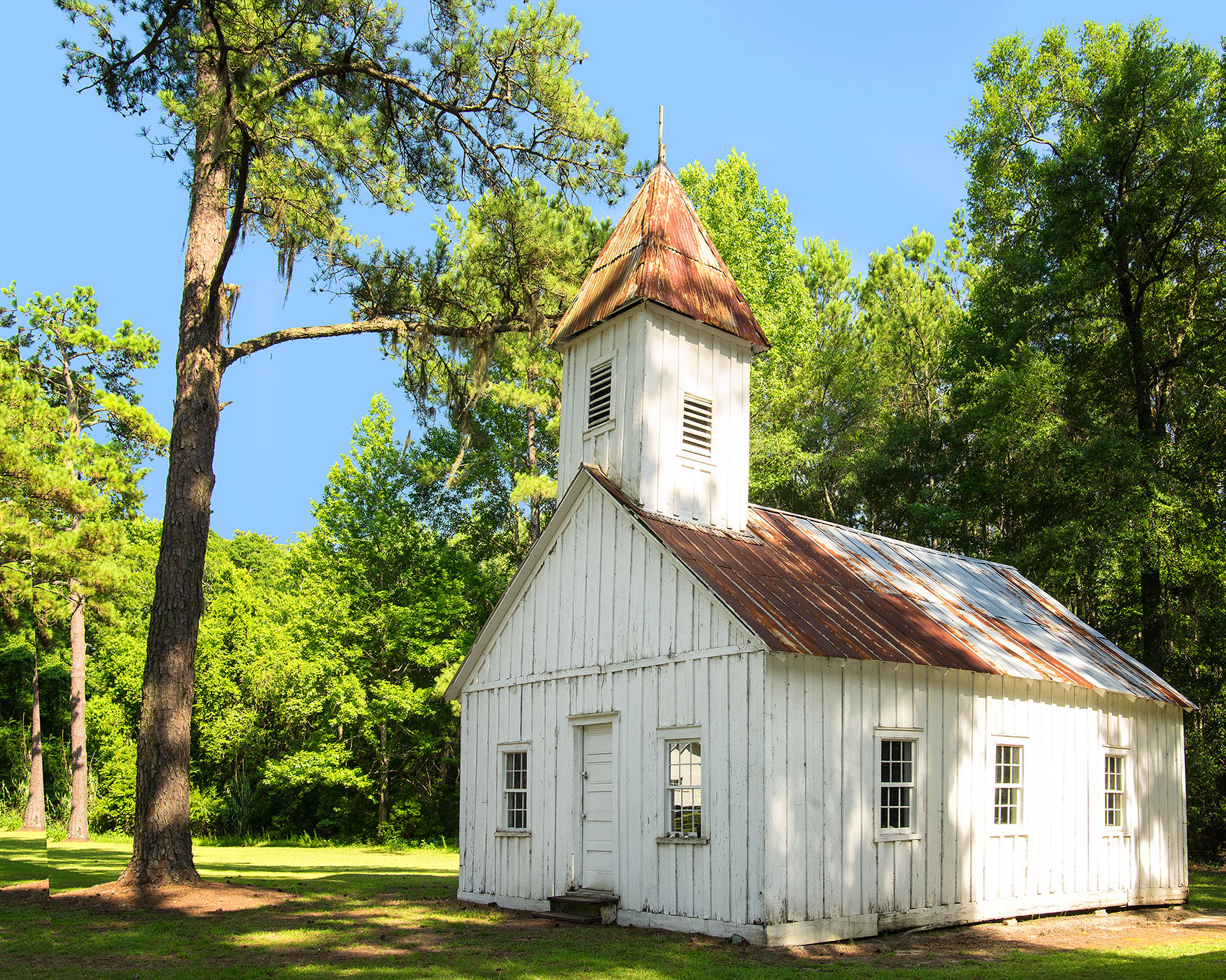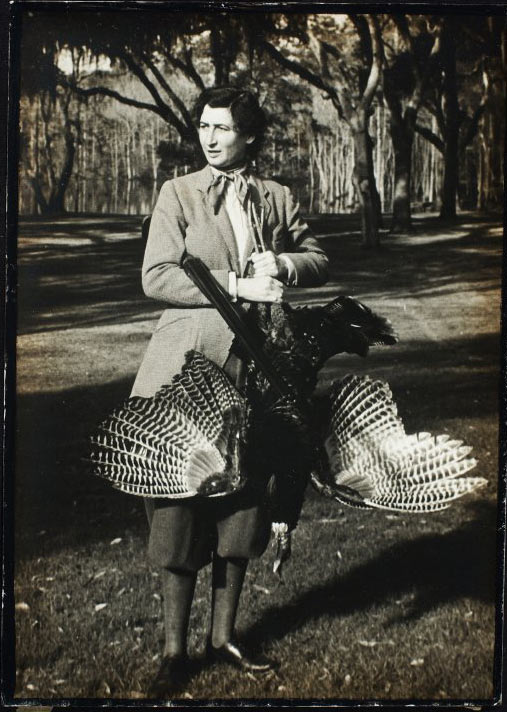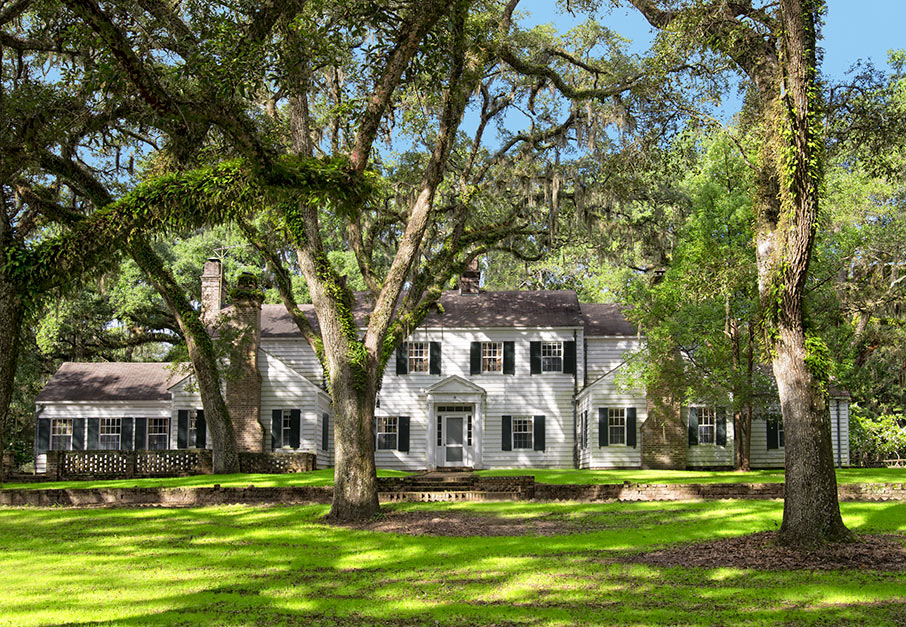The Gibbes Museum recently traveled to Georgetown, SC to visit Hobcaw Barony—a 16,000 acre preserve owned and operated by the Belle Baruch Foundation. The property encompasses a rich diversity of every common ecosystem found on the South Carolina coast, making this an ideal site for research in the environmental sciences. In addition, over 70 cultural sites on the plantation including cemeteries, slave cabins, and the Baruch’s homes all provide a time capsule for visitors. We asked senior interpreter Lee Brockington to share a bit about her knowledge of Hobcaw Barony’s great history and importance to South Carolina with our readers on the blog.
Hobcaw Barony was simply a place to pass on the way to Pawleys. As a child and young adult, I’d seen the signs, but wrongly assumed the 16,000 acres at the foot of the Waccamaw Neck was owned by the state or federal government. My siblings had visited as USC students, others as Clemson students but until I had an out of state visitor, I had no idea the land between the waters was privately owned by the Belle Baruch Foundation.
My first entry past the plantation gates was with a curator of a seventeenth-century living history farm—an associate of mine who was seeking purchase of feral swine for interpretative purposes in Maryland. As we traveled with a researcher, I asked so many questions that the wildlife biologist finally said, “They give tours up front!” We were able to take the last two spaces on a 14-passenger bus and begin to unravel the mystery that was Hobcaw Barony.
Named by the Indians who lived on the peninsula between the Atlantic Ocean, Waccamaw River, and Winyah Bay, Hobcaw was valuable as a strategic bluff with an expansive view of the confluence of five rivers of Georgetown County. The plantation was also valuable due to its rich diversity of habitats: two miles of beach, salt marsh, maritime forest, longleaf pines, cypress swamps, and freshwater ponds.
Shortly after the settlement of Carolina, 10 baronies were gifted by the King of England to his Lords Proprietors. Hobcaw Barony was surveyed in 1711 and granted to John Lord Carteret in 1718. During the years Charles Towne flourished, Beaufort was established, and the port of Georgetown opened. Over time, Hobcaw Barony was sold and subdivided into a number of individually named plantations. Because the Carolina Colony was established to make money for the Crown, plantation owners and their enslaved laborers sought ways to turn a profit through early exports of beef, pork, and naval stores. As lumber, pitch, and tar products were shipped overseas, the cleared land yielded to agricultural experiments.
On Hobcaw Barony’s plantations, early efforts of growing rice in upland fields were supplanted by inland swamp production and then rice fields created adjacent to the tidal river. The first real wealth was from indigo production and by the time of the Revolution, both rice and indigo profits were reinvested into more land and more slaves.

As we toured that day in November 1983, I absorbed as much as I could, amazed that the story of rice was not known to me like the tale of cotton. The Lowcountry was so different that the Midlands where I grew up, and strikingly differently from the barrier island beach house where we played in the dunes and in the salt creeks. Entranced with the possibilities of learning more about this unique property, I asked a number of questions during the tour, but the last question was, “Are you hiring?” Providence provided that I started work on April Fool’s Day in 1984, and I have enjoyed helping others discover Hobcaw Barony ever since.
One of the challenges to interpretation of Hobcaw Barony is that we have the opportunity to discuss topics usually excluded from “polite conversation.” The story of Hobcaw includes race, religion, sex, politics, and money. Eradication of the Indian population, the predominance of enslaved labor, the Baruch family’s Jewish heritage, Belle Baruch’s bisexuality, Bernard Baruch’s role as advisor to seven presidents, and the economic impact of millionaires’ purchases of Lowcountry plantations are all subjects offered on introductory tours and then explored in more depth in special programming.
Post-Civil War changes to rice plantations reulted in a 50-year decline due to labor costs, agricultural competition from Deep South states and a series of weather events that ended commercial rice production in Georgetown County by 1911. And by that time, Bernard Baruch had purchased 16,000 acres, renamed his holding the historic name “Hobcaw Barony,” and commenced legendary duck hunting. His wife and three young children began their love affair with the land in 1905 and celebrated the season between Thanksgiving and Easter at their southern hunting retreat with extended family and guests, traveling from their home in New York City.
“One hundred duck days” dominated the descriptions of hunting and lured many of Baruch’s associates from Wall Street, as well as leaders of industry in the years before World War I. Giving up his seat on the NY Stock Exchange, Baruch offered his services to President Woodrow Wilson and became instrumental in economic policy and war preparations. Both men had lived in SC during their youth and had a connection that lasted a lifetime. Baruch’s role as a Wall Street millionaire and an advisor to presidents can easily dominate the story of Hobcaw Barony, but the story of Hobcaw expands when his oldest child comes of age.

Belle Baruch, born in 1899 and only five years old when her parents purchased the plantation, fell in love with what she called “the friendliest woods in the world.” As a child, her reputation as a fearless hunter became known through the NY newspapers and by young adulthood, she could out ride, out hunt, out shoot any man. She loved the woods and the waters and by age 21 was asking her father if she could have her own part of Hobcaw that she could call her own. Not ready to subdivide the property or favor one child, Baruch declined and Belle moved, with many Americans to Europe following World War I. She began competitive riding and developed a stable of champion horses, defeating many men in international show jumping. The legend of her success is true—she defeated Mussolini’s and Hitler’s cavalry officers in Italy and Germany—and it was that notoriety that sent her back home to the States.
Her father agreed, in 1935, to sell her 5000 acres at Hobcaw and Belle built a home on the former Bellefield Plantation. By that time, wildlife had decreased and Belle turned her interests to managing the land and conservation of the marshes and forests. Years later, when she was diagnosed with cancer, Belle crafted a will that would establish a foundation to own and operate Hobcaw Barony as an outdoor laboratory in the fields of marine science, forestry, and wildlife.

In 1964, at the age of 64, Belle died and left a unique legacy. The resources of the barony are shared with scientists worldwide and through the foundation’s public education program in natural and cultural history. An interactive website, www.betweenthewaters.org provides users with an opportunity to explore photographs, interviews, films, and virtual tours, while www.hobcawbarony.org provides information on how to visit and learn more about access to the privately owned property. We owe a debt of gratitude to Belle Baruch, a woman who valued the Lowcountry’s lasting and breathtaking beauty.
—Lee G. Brockington, Senior Interpreter at Hobcaw Barony and guest blogger
Top image: Hobcaw House sits on a bluff overlooking the Waccamaw River. It was build by Bernard Baruch as a winter retreat for his family and place to entertain guests.
Published March 17, 2017

